Texas Hold’em Rules – How to Play & Win
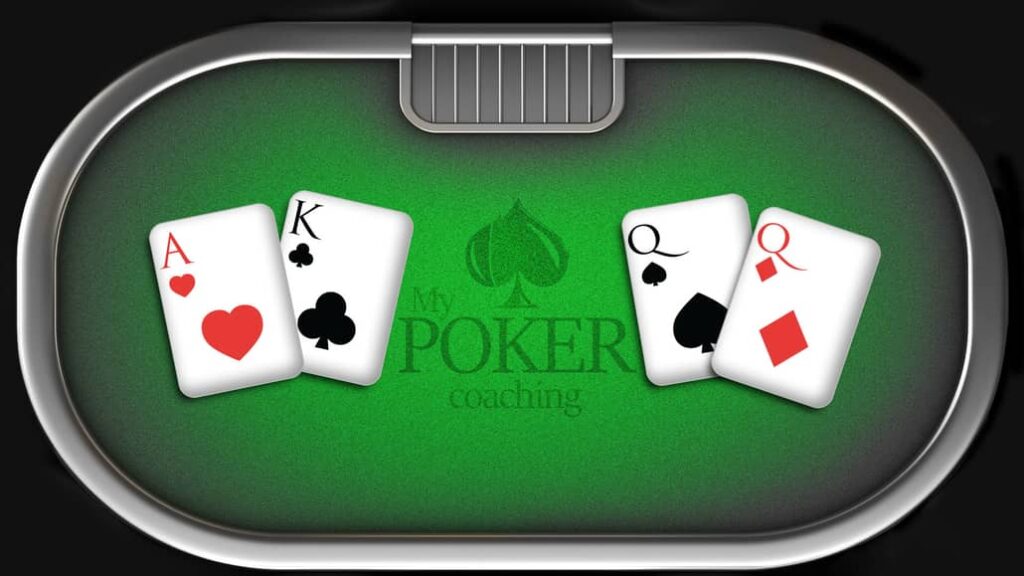
Texas Hold’em Poker has been the most popular poker game for many years now, dominating both live and online poker rooms in every way. If you are new to this popular game, you can learn all the Texas Hold’em rules right here, starting from the very basics to the more advanced concepts.
We will take a look at every rule there is to know, teach you how to play Texas Hold’em from the ground up, and kick-start your poker career.
Texas Hold’em Poker Rules – Learning the Basics
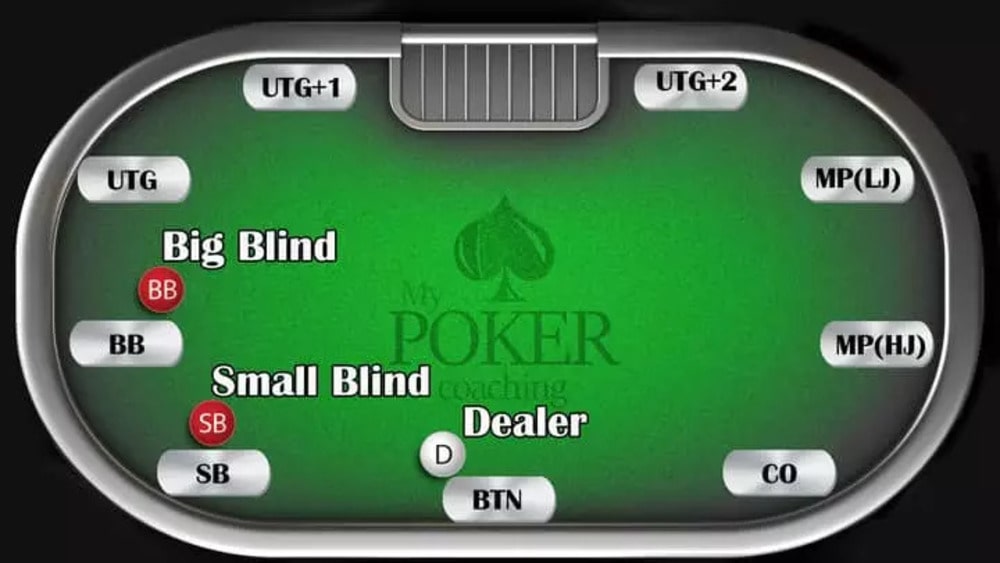
If you are new to Texas Holdem or poker in general, you must start from the basics and fully understand the fundamentals of the game before you sit down to play. This is exactly why we are starting with a section on basic Texas Hold’em poker rules.
Before diving into other things, let’s cover some of the most basic concepts, such as hand rankings, blinds setup, and betting action in Texas Hold’em.
Texas Hold’em Hand Rankings
Playing poker will be nearly impossible without understanding what hand beats what in poker. Luckily, Texas Hold’em Poker has standardized poker hand rankings which you should have no problem memorizing for future use.
Here is a short list of all the poker hands in Texas Hold’em, ranked from the strongest to the weakest:
#1. Royal Flush: Ace, King, Queen, Jack, and a Ten of the same suit, such as A♣ K♣ Q♣ J♣ T♣
#2. Straight Flush: Five cards in a row with the same suit that is not A-high, such as –T♠ 9♠ 8♠ 7♠ 6♠
#3. Four of a Kind: Combination with 4 cards of the same rank, such as 8♠ 8♥ 8♦ 8♣ 4♣
#4. Full House: Three cards of the same rank and a pair, such as J♥ J♦ J♣ 5♥ 5♣
#5. Flush: Five cards of the same suit that are not in a row, such as K♥ Q♥ 8♥ 5♥ 3♥
#6. Straight: Five cards in a row, such as 5♥ 6♦ 7♣ 8♣ 9♦
#7. Three of a Kind: Three cards of the same rank and two other cards, such as 9♥ 9♠ 9♣ 6♦ 3♠
#8. Two Pair: Combination with two different pairs, such as 4♣ 4♠ 7♣ 7♠ K♣
#9. One Pair: Two cards with the same rank and three random cards, such as A♦ A♥ J♣ 7♦ 3♥
#10. High Card: When all five cards in your hand are of a different rank, not ranked in a row, and they don’t all share a suit, all you have is a high card hand, a good example being K♥ Q♠ 8♣ 3♠ 2♦
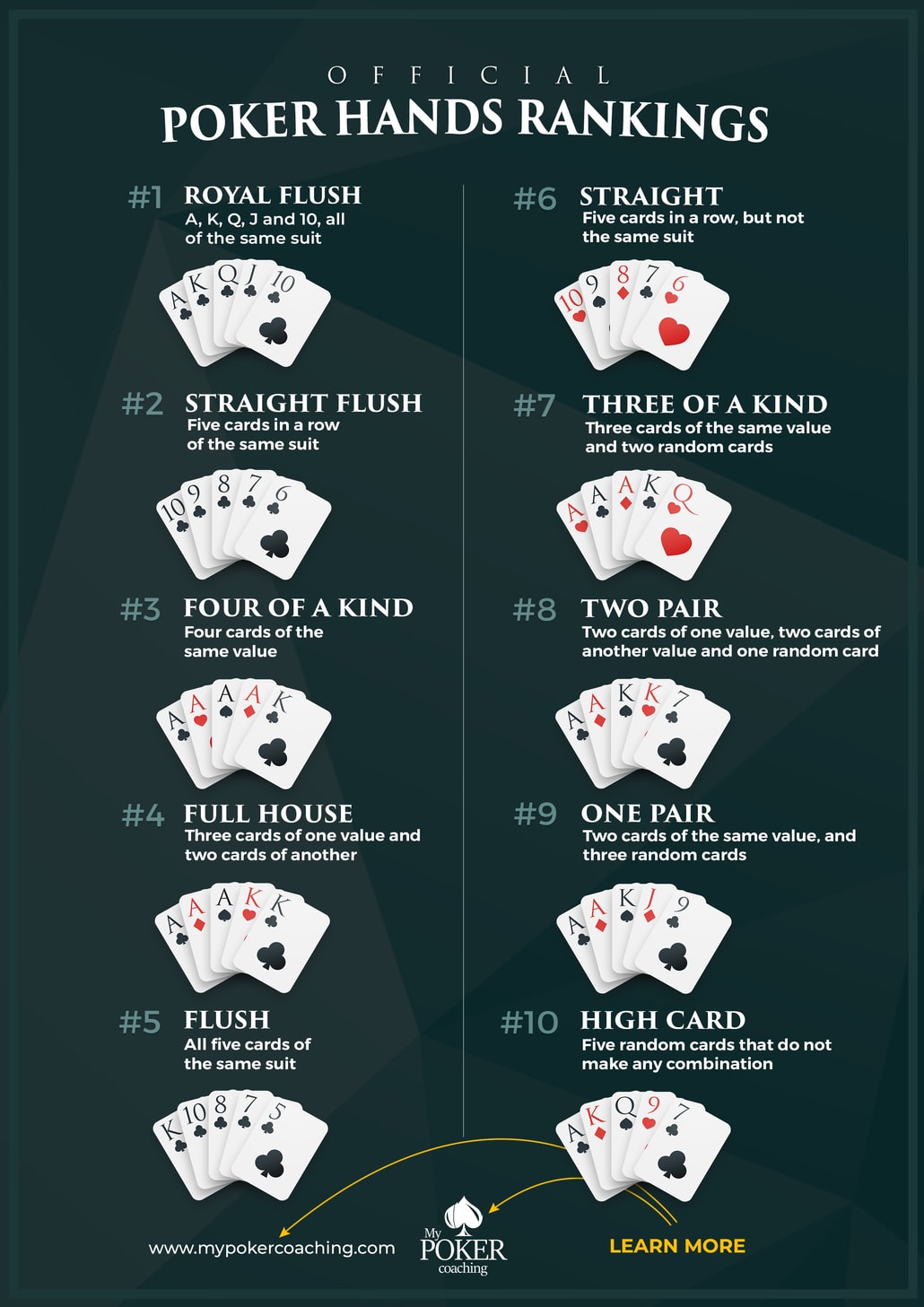
Download the full-resolution picture for later use!
If you still have some questions about hand ranking rules or specific hands in this list, you can always refer to our extensive poker hands guide to sort it out.
When you know what beats what in poker, we can go ahead and learn more about game flow and betting actions you can take in Texas Hold’em.
Blinds and Antes in Texas Hold’em
Every hand of the Texas Hold’em poker game starts the same way, with nothing except a dealer button in the middle and a card deck in the dealer’s hands. One player at the table is randomly designated the dealer button for the first hand of the night, with the button moving one spot to the left every hand after that.
To start the action, the two players to the left of the dealer button are then asked to post two “forced bets” called Small Blind and Big Blind.
The value of these two bets is determined before the game starts. In tournament poker, blinds go up each given time interval, while in cash games they remain the same throughout the session.
The small blind is typically worth one-half of the big blind, while both blind bets are relatively small compared to the players’ stacks.
For instance, a $1/2 game at your local casino will force two players to pay $1 and $2 at the start of the hand, while all players will have $100, $200, or more in front of them.
While blinds may be a small portion of an average stack, they give players a reason to play their hands and drive up the action.
Texas Hold’em Betting Action
New players just learning how to play Texas Hold’em can sometimes find it hard to keep track of all the action happening at the table.
To make things much simpler for you, we take a look at all the possible actions players can take on each betting street of a poker hand:
- Fold – Folding means letting go of your hand when you do not want to put any money into the pot.
- Check – When there is no bet in front of you, you can check and pass the action to another player without putting any of your poker chips in the middle.
- Call – When you face a bet in front of you, you can opt to call it, which means you match the current bet and continue playing the hand.
- Bet – Betting means taking aggressive action and putting your money in the middle when no one has made a bet before you.
- Raise – If you are already facing a bet in front of you but want to bet even more, you come over the top, which is known as raising.
Like in most other poker games, these are the standard actions in Texas Hold’em hand, and what you can do depends on your opponents' previous actions.
Betting and checking are actions reserved for situations in which no bet has been made before you, while all other actions can be made when you are facing an existing bet, but we will dive deeper into this in our section of How To Play Texas Holdem.
Positions in Texas Hold’em
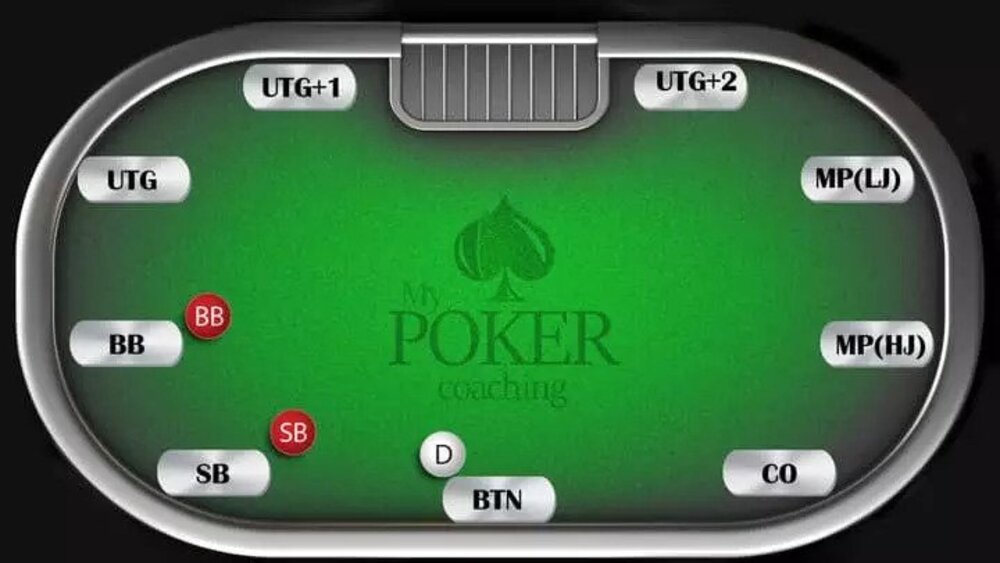
Your position at the table is very important in Texas Hold’em since it determines what hands you can profitably play from that seat and how much information you have on other players’ hands.
Here are all the positions at the poker table in order:
- UTG (Under the Gun) – This is the first position to act before the flop and is considered the worst. This position is designated to the player directly to the left of the big blind.
- UTG+1 and UTG+2 – These are also considered early positions. With many players left to act, so you should only play strong hands from there.
- MP 1 (Lojack or LJ) and MP2 (Hijack or HJ) – This is where you can start playing more hands in Texas Hold’em, as fewer players are left to act.
- Cutoff (CO) – The first really good position at the table where you can raise weaker hands to steal the blinds and antes.
- Button (BTN) – The best possible seat in Texas Hold’em, as it enables you to act last after the flop and always see what your opponents do before making your next move.
- Small Blind (SB) – This is the first seat to the dealer's left, where you must make a forced bet before the hand starts. The small blind is considered the most unfavorable position at the poker table.
- Big Blind (BB) – Just like the small blind, the player in the big blind must pay a forced bet before the cards are dealt. While the position is slightly more favorable than SB, it is still one of the worst at the table, but one where pot odds can play a big role in continuing to play hands before the flop.
According to the standard Texas Hold’em rules, the preflop action starts with the UTG player and then continues clockwise until every player makes their decision in a particular hand, while it always starts with the player in the small blind on all subsequent betting streets.
The position is an extremely important element in Texas Hold’em poker, as it allows you to know other players’ actions, control the size of the pot, and make better bets, checks, and folds yourself.
Being in a late position is always preferable to being in a late position, and you should always be looking to play more hands from positions like the dealer and the cutoff than any early position.
If you want to learn more about which hands to play from which seat, make sure to grab our free poker cheat sheet.
How to Play Texas Hold’em
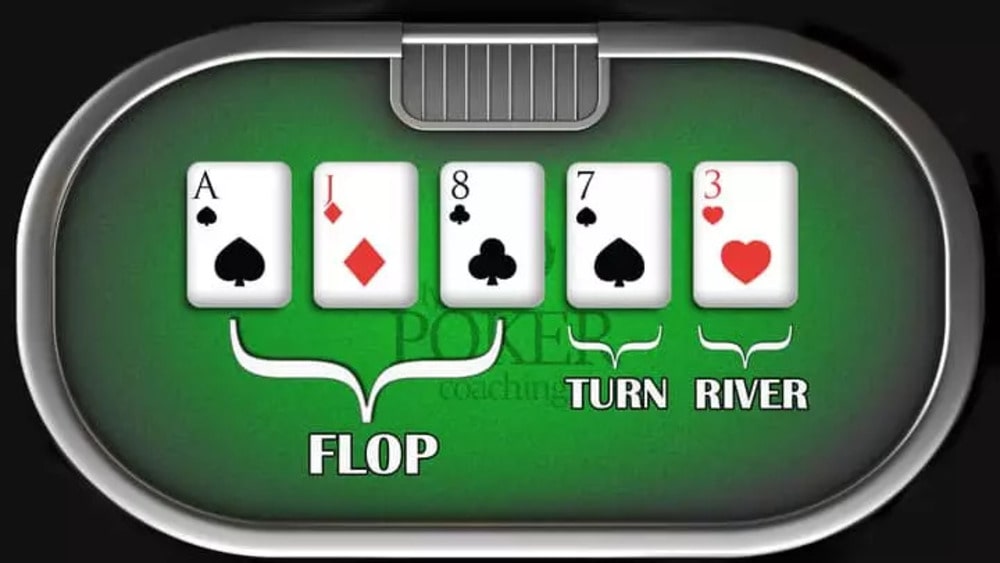
Now that you know the most basic Texas Hold’em rules, we can move forward into actual gameplay and figure out how to play the game. I have already explained the concept of forced bets in play to get the action started, so now it’s time to go from there.
Once the small blind and the big blind are posted, the dealer deals out two hole cards to each player, and the first betting round can begin.
Preflop Round in Texas Hold’em
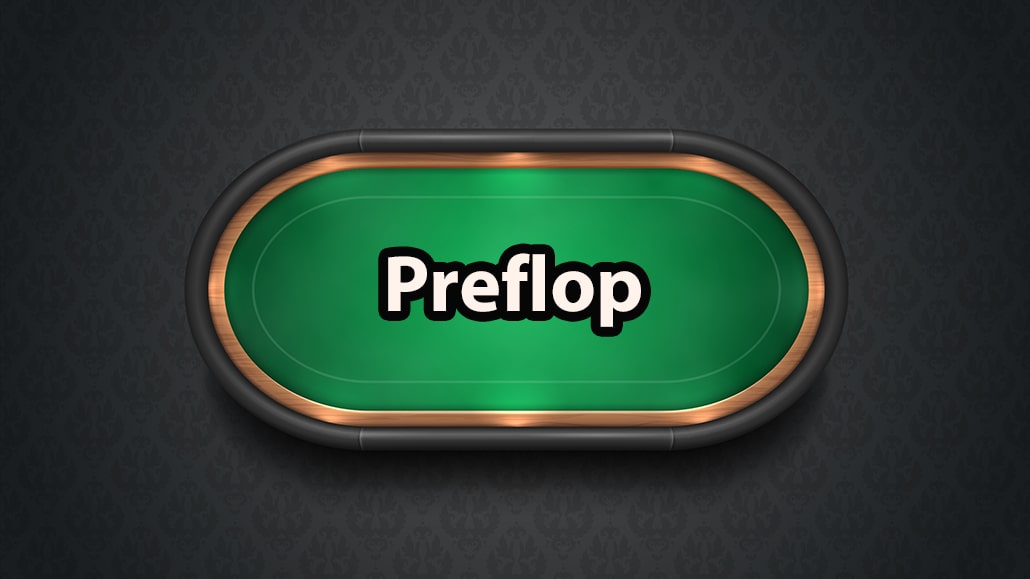
When everyone gets their initial two cards, the action starts, and every player at the table can decide how to play Texas Hold’em hand that they are holding.
Texas Hold’em poker is almost always played in a no-limit format, meaning that you can bet as much as you want, even preflop. There are no rules to limit the sizing of your bets, with your stack size being the only limiting factor.
For example, if you are playing in a game with $1/2 blinds, you can fold, call $2 or raise. The minimum raise here is $4, but you can go as big as you want and even put all of your chips in the middle if you decide to.
The first player to act is the one sitting left to the big blind, and the betting action continues clockwise until everyone has made their play.
Since there is no option to check in the preflop round (unless you are sitting in the big blind and other players just limp), you will have three options:
- Fold – Throw away your hand and wait for a better situation to play. If you fold, you will not be able to win the pot regardless of what else happens.
- Call – Match the big blind and see what others do after you. A limp, as it is called, may be an attempt to see a cheap flop, but also a trap if you are looking for another player to raise so you could re-raise with a monster hand.
- Raise – If you have a hand you want to play, you can increase the stakes by raising, which means betting more than the big blind. Other players must match this new bet to keep playing the hand.
When the first player takes action, the second one can decide following the same logic, which continues clockwise until all preflop bets are settled.
The Flop in Texas Hold’em
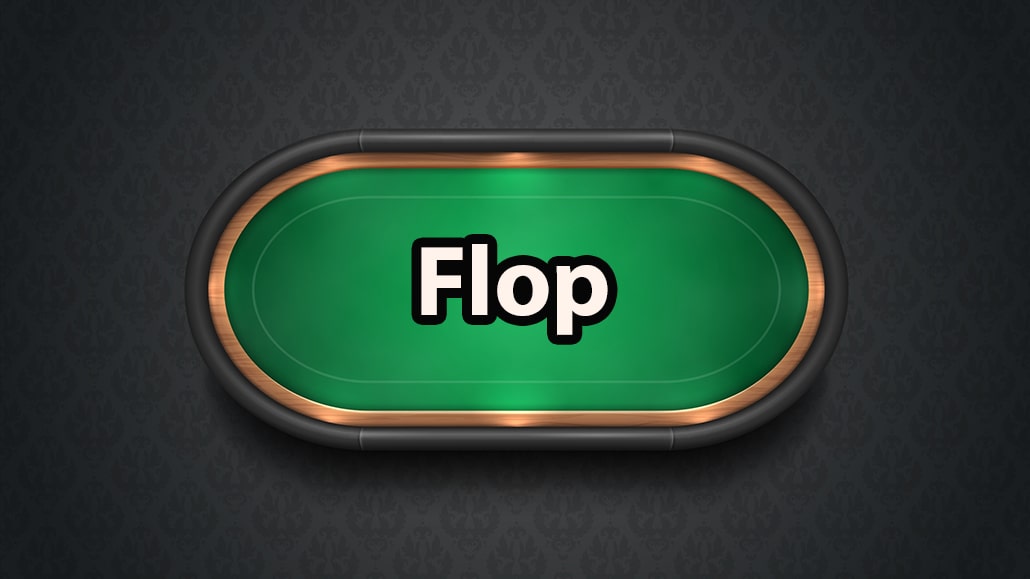
The first three community cards In Texas Hold’em are called the “Flop” and are dealt face-up in the middle of the table so every active player can use these cards to make the best possible combination.
In this round, the betting begins with the first active player to the left of the button (dealer) and continues clockwise until everyone makes their decisions. This time, if nobody has made a bet before you, you can check without putting any of your money in the middle and pass the action to the next player.
If all players agree to check, you will see the fourth community card, “turn.”
However, if someone decides to bet, all players have to follow the action again and decide if they want to fold, call or raise, and only players who match the bet can proceed to the next street.
Since Texas Hold’em poker is mostly played as no limit, players can bet any portion of their chips at any point in the hand.
The Turn in Texas Hold’em
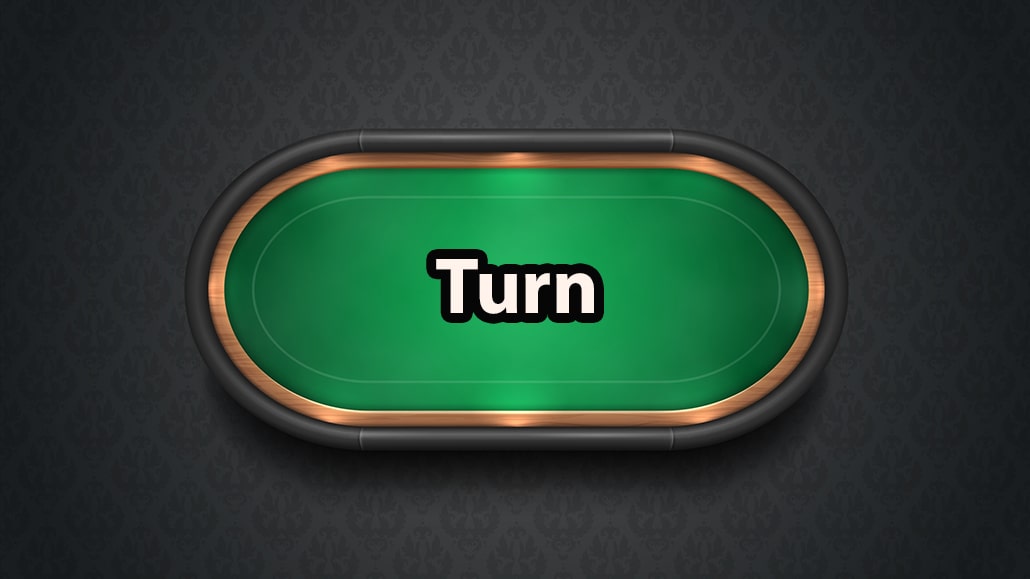
When all of the betting action on the flop is completed, the fourth community card is dealt in the middle for everyone, known as the “turn.”
Then another betting round begins with the first active player to the dealer's left and follows the same Texas Hold’em poker rules for betting as on the flop.
The River in Texas Hold’em
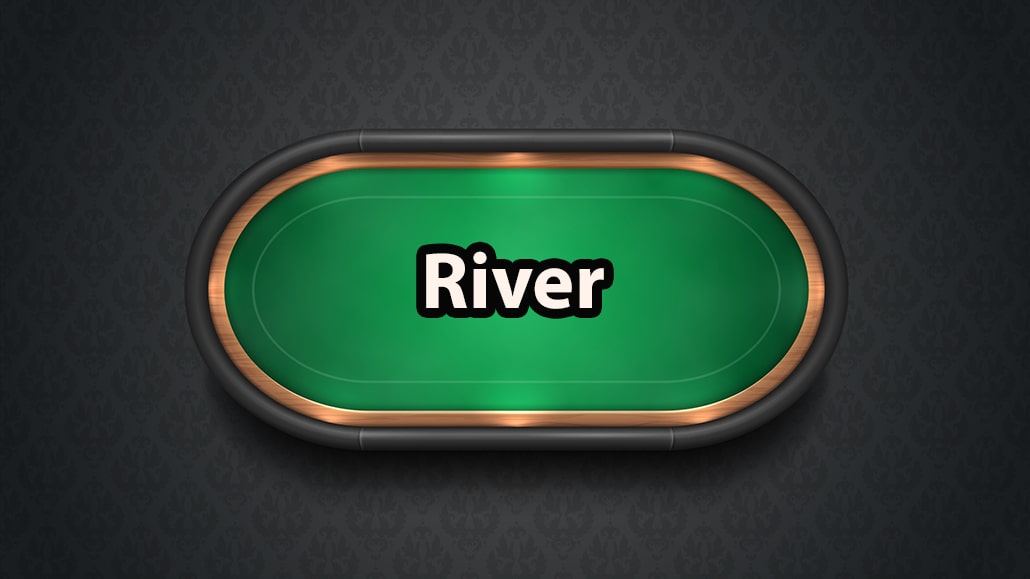
When every player completes their actions on the turn, the last card, known as the “river,” is dealt face-up on the board.
The river is the last community card in Texas Hold’em game, and the last betting round starts when it is dealt.
All of the same rules are followed as in previous betting rounds, and once again, the action starts with the first active player to the left of the dealer.
Showdown in Texas Hold’em
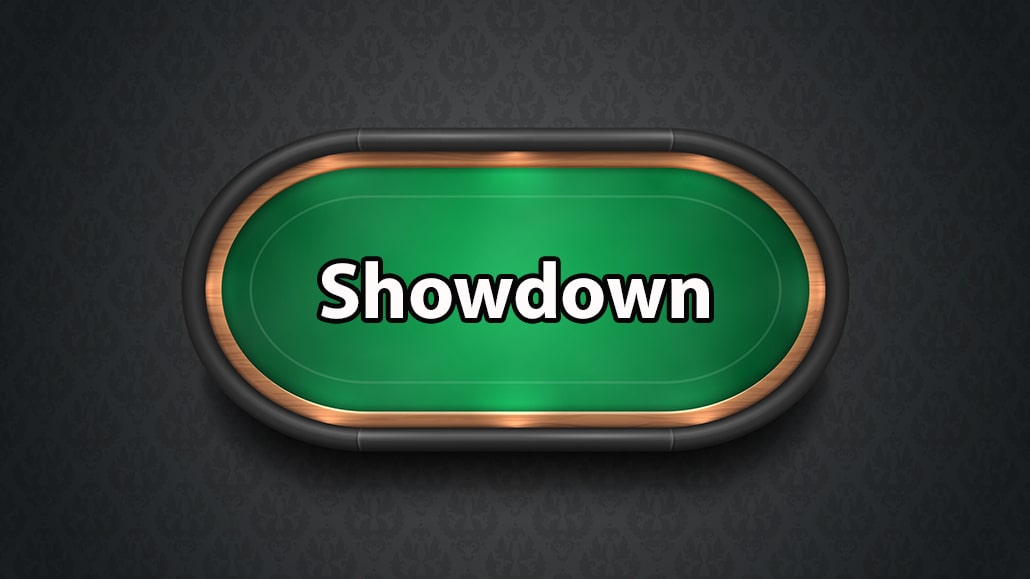
If there is more than one player left in the hand after the last betting round on the river, the hand moves to the showdown. This is the last phase of a Texas Hold’em Poker hand.
Players turn their cards over in order, and the dealers compare the cards in accordance with the Texas Hold’em poker hand rankings.
There are a few showdown rules you need to keep in mind in Hold’em:
- The player who was the first to bet on the river has to show his hand first.
- If no one bet on the river, the player sitting to the dealer's left has to show his cards first.
- The player may choose to muck (fold) his hand without showing if he wants to do that.
- Once the showdown is complete, the dealer collects all the cards, moves the button, and proceeds to deal the next hand.
Texas Hold’em Hand Example

Now that we have covered all the Texas Hold’em rules and basic game flow, let’s go into an example Texas Hold’em hand, so you can get a feel for how the action might go in a typical hand.
Remember that this hand is only an example, and players can choose to take any of the actions available to them in any betting round, so don’t think every hand will flow the same way.
However, the following hand example will show you exactly how a hand of Texas Hold’em might play out in a typical game.
Preflop in Texas Hold’em
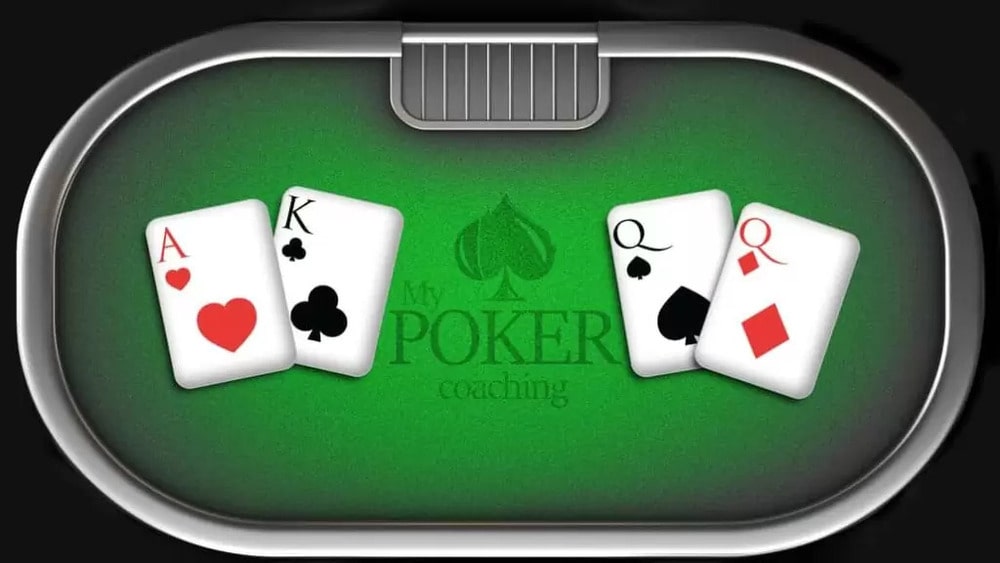
Playing in a $1/3 cash game in a Las Vegas casino, you are seated on the dealer button, the best position at the table. You have $300 in your stack, and your opponents all have similar stacks.
The two players to your left post the $1 and $3 blinds, and the dealer deals everyone two hole cards. You look down at 8s8h and wait your turn.
Players in UTG+1, HJ, and CO each decide to just call the $3 bet, and the action is over to you. Holding a strong hand, you bump it to $20.
The players in the blinds fold their cards, and the UTG+1 limper, but the players in HJ and CO call your raise.
The Flop in Texas Hold’em
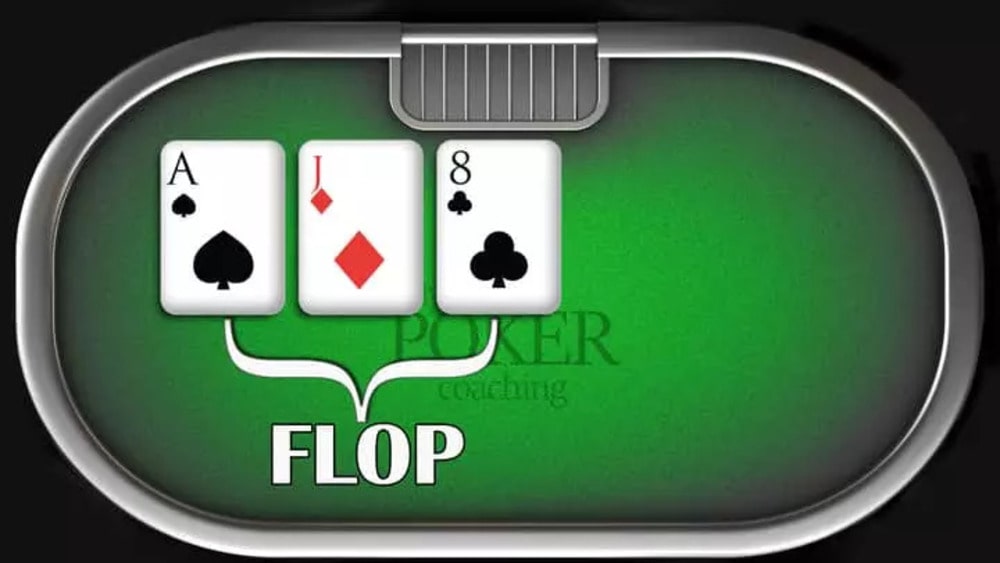
With $67 now in the pot (your $20, HJ’s $20, CO’s $20, UTG+1’s $3, SB’s $1, BB’s $3), the dealer puts out a flop.
The flop comes out AsJd8c, a great board for your pocket eights since you improve to a set. Both players decide to check to you, and you now bet $40 in the hopes of getting paid by an inferior hand.
The player in the HJ instantly folds his cards, while the player in the CO decides to call your $40 bet, and you proceed to the turn.
The Turn in Texas Hold’em
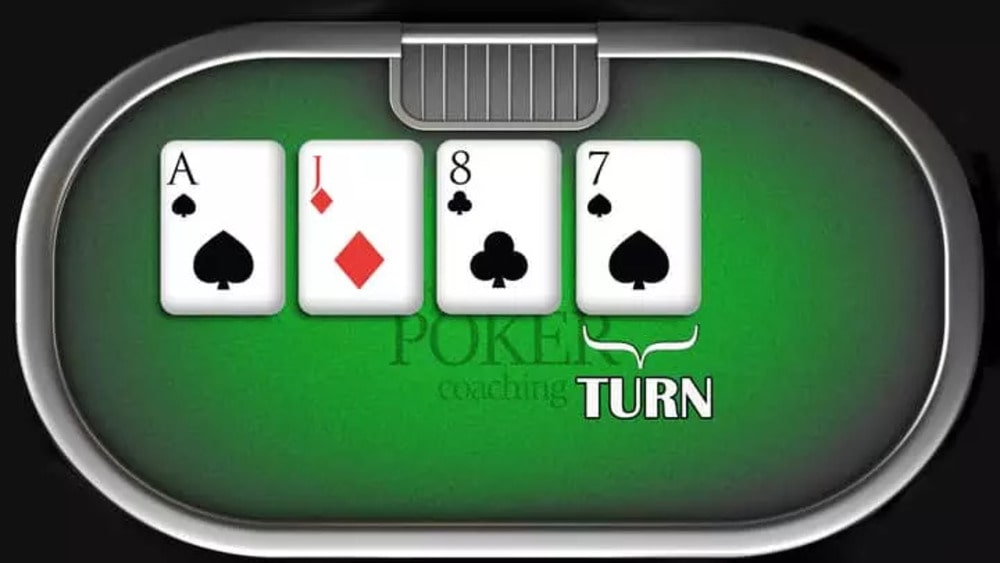
With $147 now in the pot, you see the dealer put out the 7s on the turn. This is a super safe card for you, and it is likely you still have the best hand.
Once again, the only remaining opponent in the hand decides to check to you, and you bet for $80, leaving yourself with $160 in your stack.
Once again, your opponent takes a while, thinks about it, and throws in the calling chips, taking you to the river.
The River in Texas Hold’em
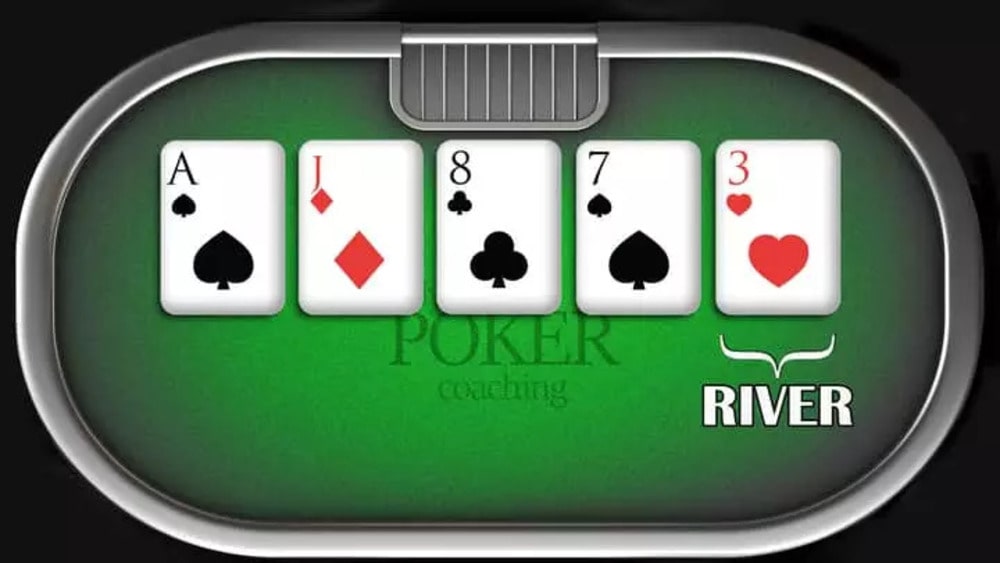
The dealer puts out the 3h, making the full board AsJd8c7s3h.
Your opponent checks to you, and you decide there is only one play left, which is to go all in for your remaining $160.
Your opponent takes a very long time deliberating on whether to call you, which is a great sign, as there is now almost no chance you are not winning.
After a few minutes, the player puts in the chips to make the call, and the dealer announces Showdown.
The Showdown in Texas Hold’em
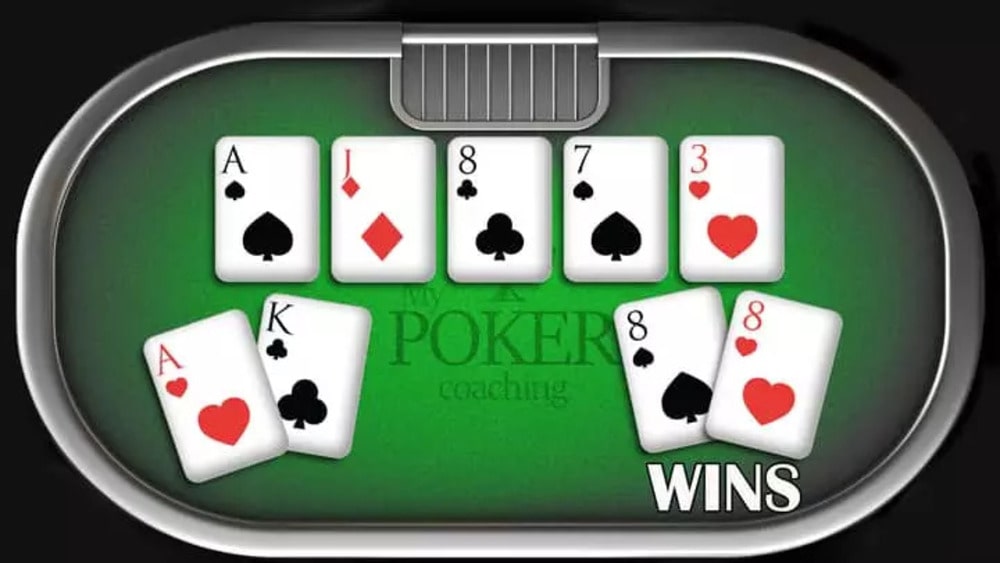
With all action now completed, it is time to show the cards. As you were the players to make the last aggressive action, it is your turn to show the cards.
Sure enough, the other player waits to see your cards. Once you table your pocket eights, another player turns over the AhKc. He had hit the top pair on the flop and could not make the fold, as he expected his top pair was good.
The dealer counts out the opponent’s calling chips, charges the house rake, and pushes the rest of the pot your way.
Congratulations, you have now played your first hand of Texas Hold’em poker and won your first big pot!
Texas Hold’em Poker Strategy Tips

Knowing all the Texas Hold’em rules is only the first step in profitably playing this complex card game. If you want to know how to play Texas Hold’em Poker like the pros, you will have to think about much more than which hand beats which and what order players play in.
In fact, Texas Hold’em is a complex strategy game that requires a lot of different decisions to be made in every hand, so I will give you a few basic poker strategy tips right now that could help you out along the way.
Playing the Right Hands Preflop
Each Texas Hold’em hand starts in the preflop round, and your decisions can impact everything that happens in subsequent betting rounds. Making big mistakes in the preflop round will lead to mounting mistakes on further streets, eventually leading to terrible results.
Since you are just learning how to play Texas Hold’em, I recommend sticking to the old saying “tight is right.”
While playing a tight poker game may not be the most fun to go about it, it is the safest way and the best way to avoid making costly mistakes. Play only premium hands from early positions and only solid suited and paired hands from late positions, and you will do well against most players.
Your starting hand selection will determine everything else that happens in the game, so don’t play too many hands, don’t call raises with hands like QJ that are often dominated, and don’t try to outplay anyone for the time being.
Sticking to a tight strategy will allow you to capitalize on other players’ mistakes. Many novice players in lower-stakes games will play too many hands and make many fundamental mistakes that are easily avoided. Stick to only playing top starting hands, and you will do much better than most of your opponents.
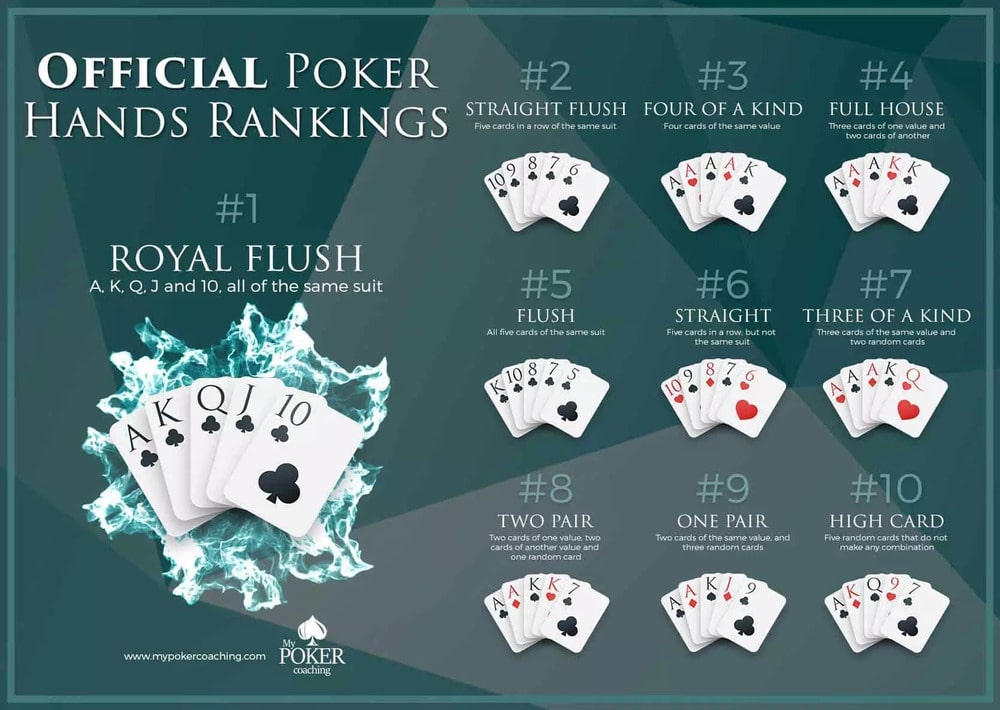
Download the full-resolution picture for later use!
Mastering GTO Strategy
Game theory optimal (GTO) strategy is a phrase that’s been thrown around the poker world a lot in recent years, but the truth is that most players don’t really understand what it is in the first place. GTO poker strategy is one based on the “solutions” of poker solvers, powerful software tools created to help with poker studying.
Poker solvers create solutions for poker hands based on a number of player inputs, such as player stacks, player hand ranges, possible bet and raise sizes, and more.
Studying poker with solvers and solver-based teaching courses is a great way to get into it, but it is also important to keep in mind that GTO strategy is limited.
The limitation I am referring to is that solvers don’t try to exploit your opponent’s tendencies but rather focus on protecting you from being exploited by others. Since no real player could possibly remember all the solver outputs either, most people who base their play on GTO end up making mistakes regardless.
However, learning some GTO baselines and understanding how solvers “think” about poker is an invaluable tool to add to your poker arsenal. When you do that, make sure to check the best poker training sites and start working on your game even more seriously.
Adjusting Versus Weaker Players
When you first start playing Texas Hold’em poker, you will likely be going up against many weak players who don’t play the game at a very high level.
Against such players, you will be able to play a very “exploitative” strategy and make more money than a poker solver ever could. As you play poker, you should try to understand why your opponents are doing the things they are doing and make adjustments to individual players.
Most newbies will either bluff too much, play too tight, be unaware of proper bet sizing, or make other mistakes you can capitalize on.
By focusing on ways in which you can exploit the particular player you are up against, you will find new and creative ways to dominate the low-stakes games you are playing.
How to Play Texas Hold’em Poker Online

If you have just learned how to play Texas Hold’em and want to try the game out and learn more as you go, online poker is your best bet.
Online poker allows you to play games for extremely low stakes, play at your own pace, and choose any game format you enjoy at any time of day or night. On top of that, you can get a poker sign-up bonus and boost your bankroll or start playing without investing any of your own money.
Since online poker offers so much versatility, you should have no problem getting started, but here are a few tips on how to make the best out of it.
#1. Choose the Best Online Poker Site
The first decision you have to make is which online poker site you want to play Texas Hold’em Poker on. There are many online poker rooms out there, but the exact selection will depend on the legal jurisdiction you find yourself in.
The first thing to do is figure out which of the biggest poker sites are available in your country or region, as some sites limit their presence in certain parts of the world. If you are living in the United Kingdom, you should check the best UK poker sites. If you reside in Canada, take a look at the top online poker sites in Canada, etc.
In those countries with a lot of poker sites to pick from, you should look at some poker site reviews, find out more about the kinds of games that are available, welcome bonuses and promotions you can capitalize on, etc.
Choosing a site with adequately soft poker games and plenty of new player promotions will allow you to get the best experience as a new poker player.
Here are the list of top sites we recommend checking out:
#2. Pick Your Format
The game of Texas Hold’em can be played in many different formats, and online poker sites offer many of them all at once.
When playing online poker, you can choose from the following formats:
- Multi Table Tournaments: MTTs allow you to play against hundreds of other players and win a huge score for a small buyin if you can go on and win all the chips in play.
- Sit and Go Tournaments: Smaller field tournaments, SNGs allow you to compete against one or a few tables of players and come out on top more often.
- Jackpot Sit and Goes: If you think you are lucky, you can try jackpot sit and goes, which are played with just two players but can award up to 10,000x your buyin if you are lucky enough to be picked for the jackpot game.
- Cash Games: One of the most popular poker formats, cash games allow you to play for chips with actual monetary value and cash out at any time.
- Fast Fold Cash Games: Available at major poker sites, fast-fold cash game tables let you move on to the next hand with new players as soon as you fold your cards, significantly speeding up the rate at which you play hands.
Each poker format has its upsides and downsides, but make sure to pick from the best real money poker apps to get a great all-around experience.
The main decision to make is whether you want to grind out cash games for a steady rate of profit or play tournaments in hopes of a single big score every now and then.
Both formats have pros and cons, but it is worth noting that gameplay in online poker tournaments is generally significantly weaker than anything you could ever find at the cash game tables.
#3. Start at the Low Stakes
The biggest mistake you can make in poker is to think that you are better than you actually are, which many players do as soon as they learn how to play Texas Hold’em.
Winning a pot or two against other inexperienced players, or getting lucky against a good player, does not mean you are ready to play in high-stakes games. In fact, if you are only learning the game, I highly recommend playing in the lowest-stakes games until you get better.
Once you see that you are consistently winning in the micro-stakes, you can gradually move up to higher games.
Alternatively, if you get poker coaching from a recognized coach, and they recommend playing in higher-stakes games, you can consider taking that advice.
However, always remember to have a proper bankroll at your disposal for the stakes you are playing, as the variance is a very real thing in poker.
#4. Take Your Time
There is no rush to become a poker master overnight. In fact, even if you play poker recreationally for the rest of your life, that’s completely fine.
Most poker players out there never turn pro, and you don’t have to, either. You should make sure to take your time, learn the game at a pace that works for you, and always focus on being a better player than you were yesterday.
If you don’t have the time to play poker too much, take it easy and play for fun. There is no rule that says you have to advance through stakes or play any higher today than you did a year ago. Of course, if you want to dive deeper into the Texas Holdem game, you can always read one of the best poker books or get some poker software and learn more.
Learning How To Play Texas Holdem Poker – Summary
We covered all of the most important Texas Holdem rules, so I am sure you are fully aware of how this game is played. Remember to stick to the fundamentals, and you will do great.
Play fewer hands but do it aggressively when learning how to play Texas Holde’em.
Also, be aware of your position at the table, preflop hand selection, and optimal strategies postflop based on your observations and your opponent's tendencies.
If you remember these simple tips, you will love Texas Holdem poker and will be able to build even more advanced strategies on top of these fundamentals.
Texas Hold’em Rules FAQs
ONLINE POKER:
RESOURCES:









